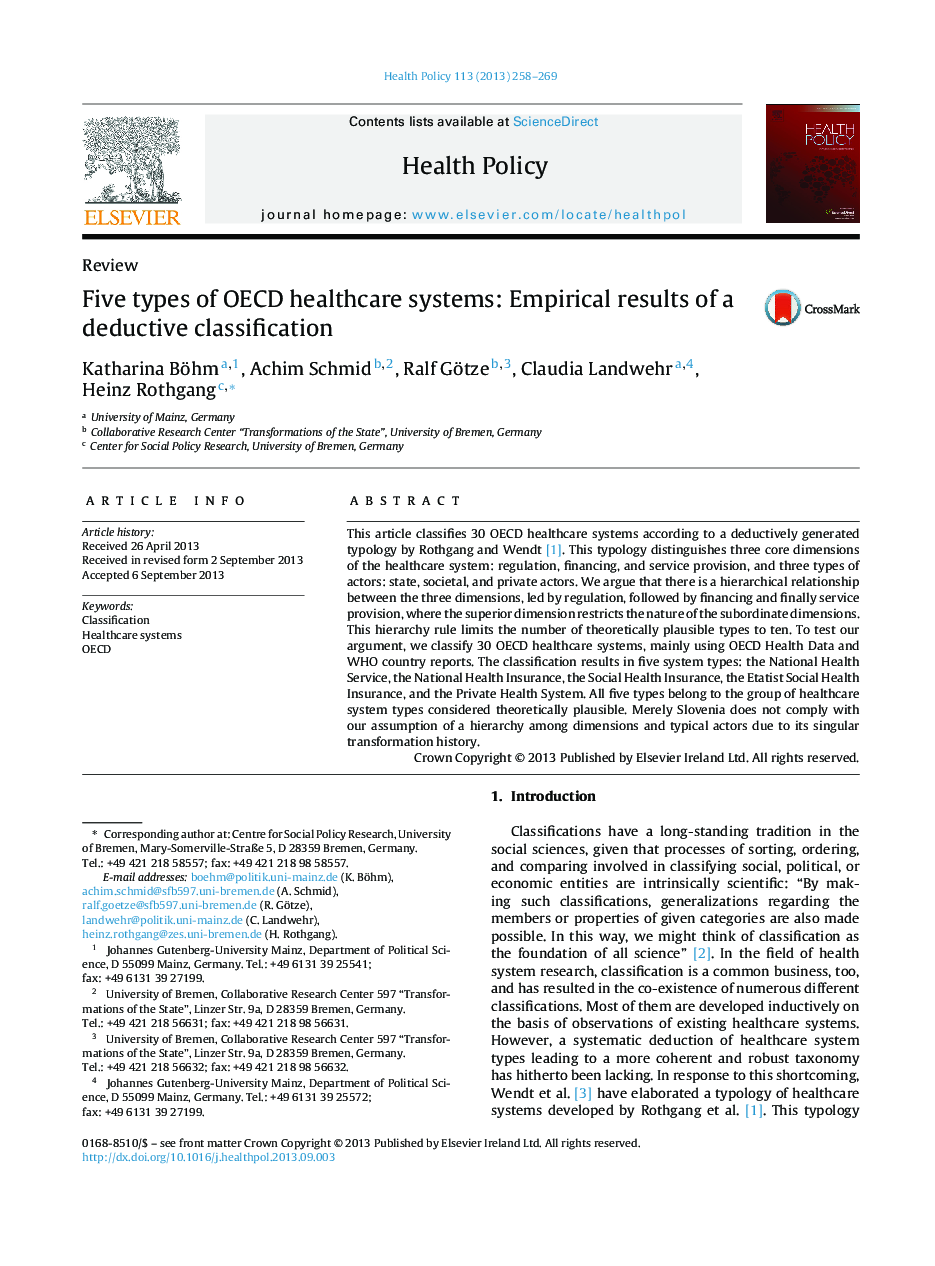| Article ID | Journal | Published Year | Pages | File Type |
|---|---|---|---|---|
| 4197774 | Health Policy | 2013 | 12 Pages |
This article classifies 30 OECD healthcare systems according to a deductively generated typology by Rothgang and Wendt [1]. This typology distinguishes three core dimensions of the healthcare system: regulation, financing, and service provision, and three types of actors: state, societal, and private actors. We argue that there is a hierarchical relationship between the three dimensions, led by regulation, followed by financing and finally service provision, where the superior dimension restricts the nature of the subordinate dimensions. This hierarchy rule limits the number of theoretically plausible types to ten. To test our argument, we classify 30 OECD healthcare systems, mainly using OECD Health Data and WHO country reports. The classification results in five system types: the National Health Service, the National Health Insurance, the Social Health Insurance, the Etatist Social Health Insurance, and the Private Health System. All five types belong to the group of healthcare system types considered theoretically plausible. Merely Slovenia does not comply with our assumption of a hierarchy among dimensions and typical actors due to its singular transformation history.
